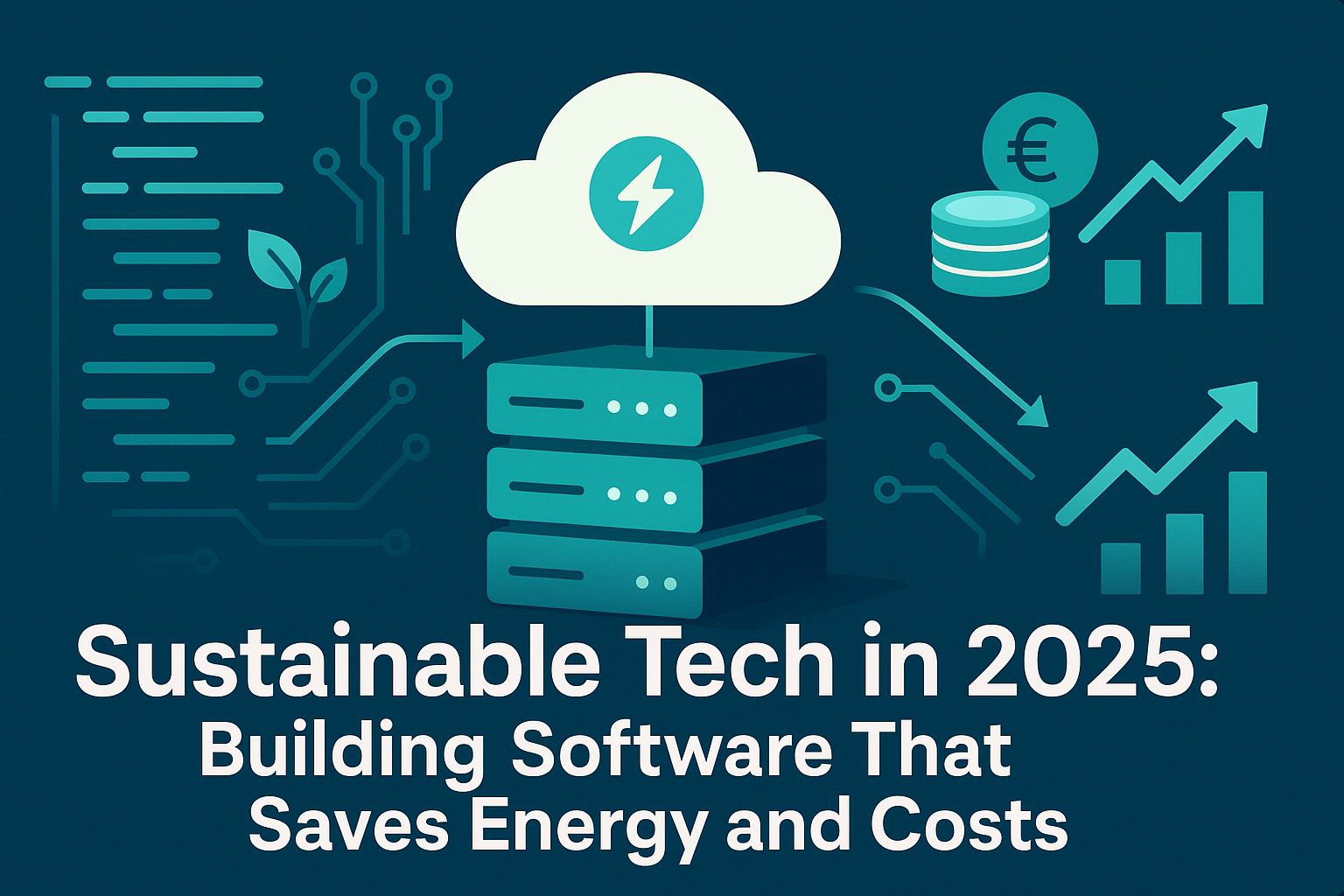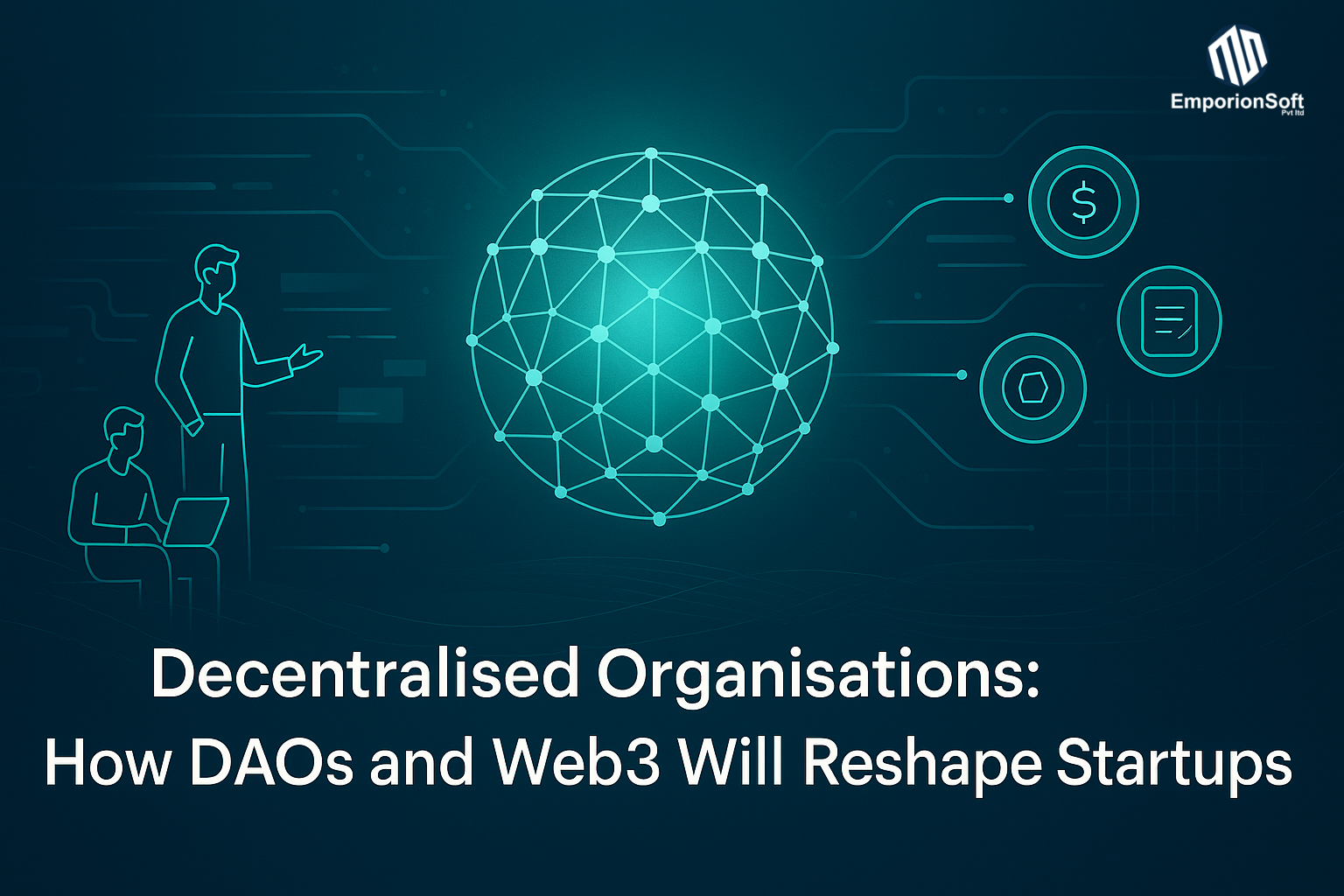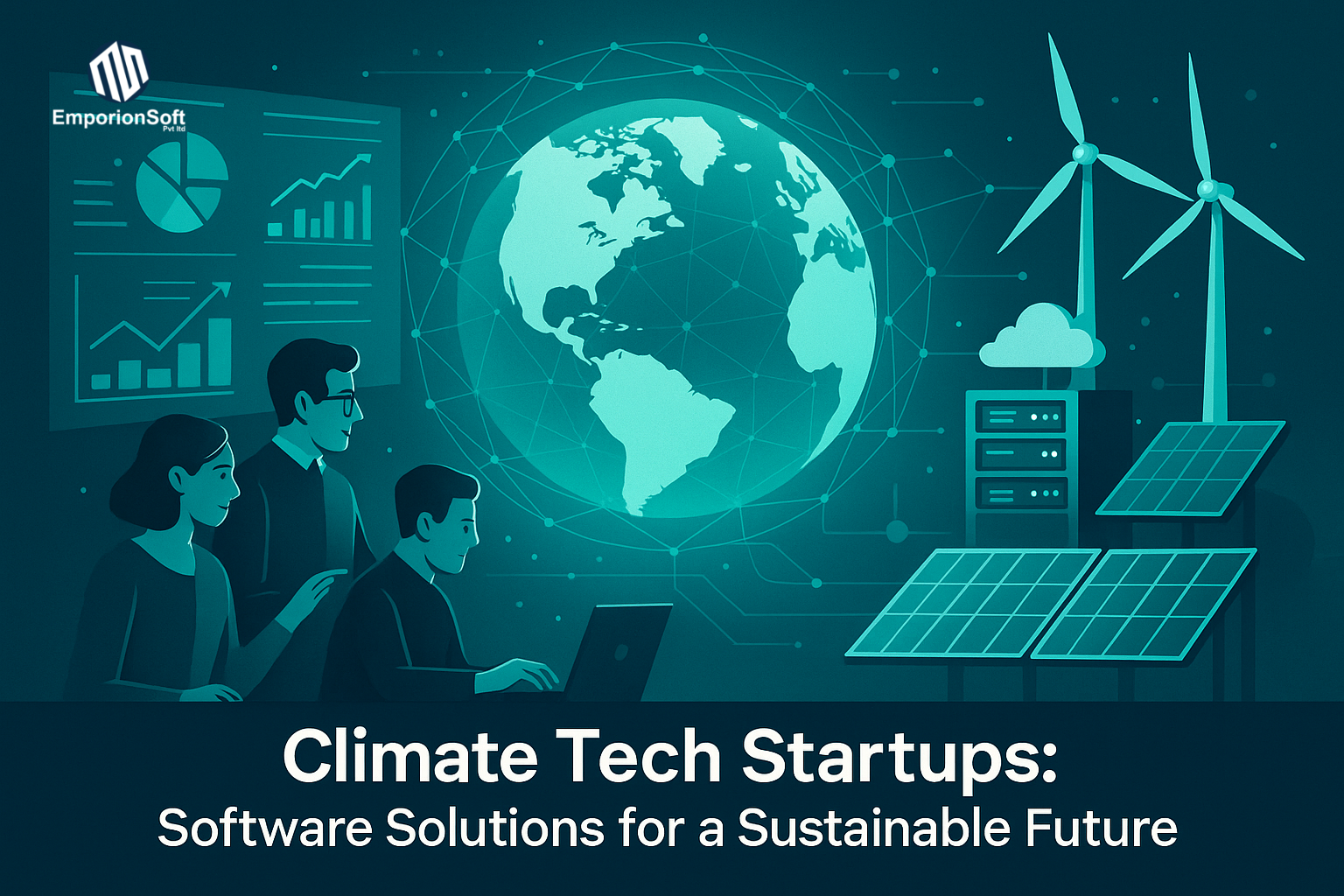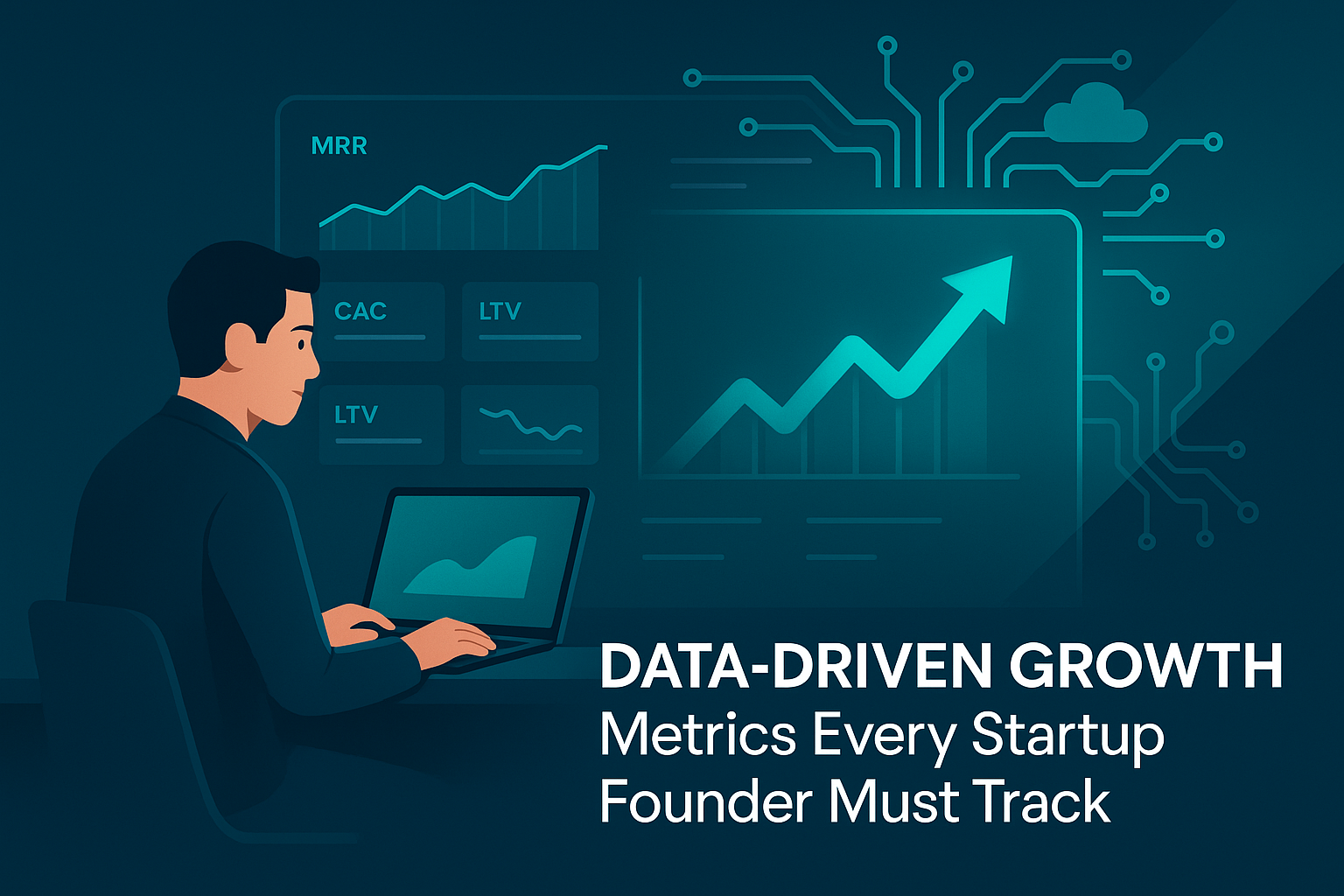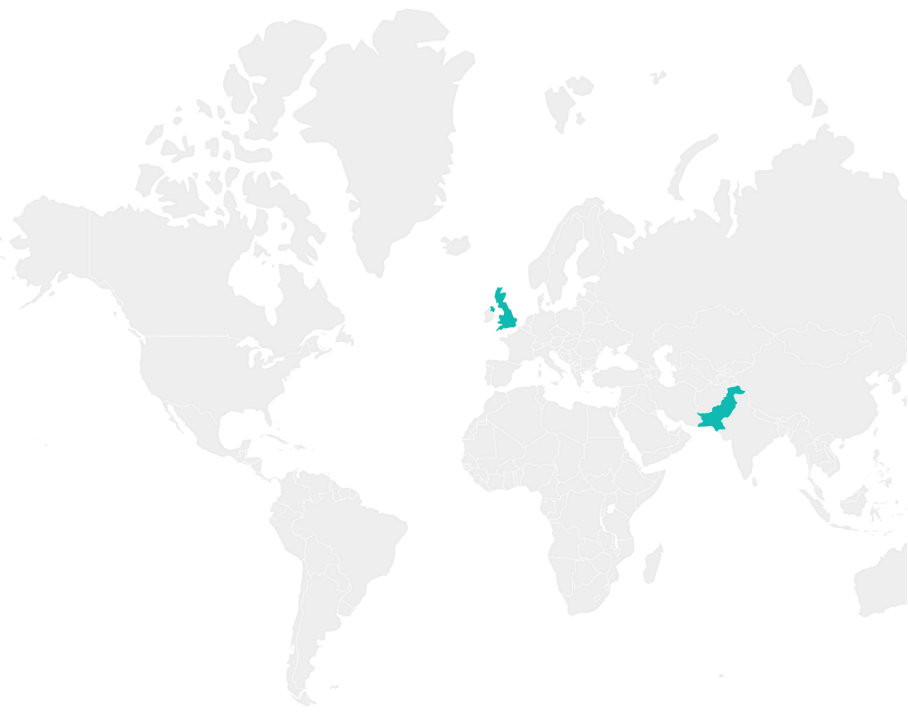Why Sustainable Software Development Matters in 2025
Climate change, volatile energy markets, and mounting corporate responsibility are reshaping how businesses approach technology. Software, once viewed as an intangible product with minimal environmental impact, is now recognised as a significant contributor to global energy consumption. In 2025, the conversation is no longer about if we should consider sustainability in technology—it is about how quickly we can adopt practices that cut energy use and operating costs while building a resilient digital future.
According to the United Nations, the ICT sector contributes an estimated 2–4% of global greenhouse gas emissions, a figure projected to grow without intervention (UN, 2023). With data centres, cloud platforms, and software applications consuming vast resources, the pressure is on businesses to integrate sustainable practices at every layer of the digital stack. This is where sustainable software development emerges as a defining approach for modern enterprises.
What is Sustainability in Software Engineering?
At its core, sustainability in software engineering refers to creating systems that balance performance, scalability, and energy efficiency while reducing environmental impact. It moves beyond short-term optimisation and instead embraces a lifecycle perspective: how software is designed, deployed, and maintained across years of use.
The importance of this shift is twofold. First, the global cost of powering IT systems continues to rise, with energy bills squeezing startups and enterprises alike. Second, regulators and consumers are holding companies accountable for their environmental footprint. Adopting sustainable practices is no longer optional; it is becoming a business necessity.
This is precisely why sustainable development is important in software engineering—it connects ecological responsibility with tangible financial outcomes. By writing cleaner code, using efficient algorithms, and optimising infrastructure, organisations can simultaneously lower costs and reduce their carbon emissions.
Why 2025 Marks a Turning Point
Several forces converge in 2025 to make sustainable software development critical. Cloud adoption is accelerating, but so are concerns about its environmental cost. Artificial intelligence is booming, yet training large models requires enormous energy input. Meanwhile, consumers are becoming more conscious of how digital services impact the planet.
The World Economic Forum emphasises that “green digital transformation” is one of the most important levers for reaching net-zero targets (WEF, 2024). Companies that align their technology strategies with sustainability goals not only strengthen brand trust but also gain a competitive advantage in increasingly regulated markets.
The Business Case for Sustainable Tech
Energy efficiency and cost savings are the immediate benefits of sustainable software practices, but the value extends further. Businesses that integrate sustainability into their technology:
-
Reduce operational expenses through optimised infrastructure.
-
Comply with environmental regulations and avoid costly penalties.
-
Enhance reputation and customer trust by demonstrating corporate responsibility.
-
Future-proof their systems against rising costs of energy and stricter sustainability demands.
At EmporionSoft, we understand how vital it is for businesses to remain competitive while staying environmentally responsible. Our services are designed to help organisations adopt forward-looking strategies that blend performance with sustainability, ensuring technology supports both growth and long-term responsibility.
Setting the Stage for Sustainable Software
The rest of this blog will explore practical strategies for embedding sustainability into software—from efficient design principles to emerging tools for measuring environmental impact. We will also highlight real-world examples and frameworks that businesses can adopt in 2025 to build greener, leaner, and more cost-effective systems.
By the end, it will be clear that sustainable software development is more than an ethical choice. It is a pathway to innovation, resilience, and profitability in an era defined by environmental urgency and financial efficiency.
What is Sustainable Software Development?
In today’s fast-changing digital landscape, businesses are rethinking how technology is built and deployed. Beyond speed and functionality, organisations are now asking an important question: how can software contribute to sustainability? This is where sustainable software development comes into focus. It refers to designing, building, and maintaining applications in ways that minimise environmental impact, reduce costs, and extend the useful life of technology.
Software Sustainability Definition
At its simplest, software sustainability definition can be explained as the ability of software to meet present needs without compromising future usability, adaptability, or environmental responsibility. This concept covers three interconnected dimensions:
-
Environmental sustainability – reducing energy consumption and carbon footprint.
-
Economic sustainability – delivering long-term cost efficiency and return on investment.
-
Social sustainability – supporting ethical practices, accessibility, and inclusive design.
When applied together, these principles ensure that software is not just a short-term solution but a long-lasting, responsible asset.
What is Sustainable Software Design?
While sustainability is often associated with physical infrastructure or energy policy, the idea of sustainable software design is equally critical. It involves decisions at the coding, architecture, and deployment levels that influence efficiency over the software’s lifecycle.
For example, sustainable design might mean choosing energy-efficient algorithms, reducing unnecessary computations, or structuring databases for minimal resource usage. It also includes anticipating scalability needs, so software avoids premature replacement or costly re-engineering.
As the IEEE notes, sustainable design is about striking a balance between performance, resource use, and longevity—ensuring that technology remains relevant and efficient in the face of growing demands (IEEE, 2024).
Strengths and Weaknesses of Sustainable Software Design
Strengths
-
Lower Energy Consumption: Efficient design reduces power usage in data centres and end devices.
-
Cost Savings: Streamlined processes and optimised code reduce infrastructure expenses.
-
Regulatory Compliance: As governments enforce stricter sustainability policies, software aligned with these frameworks avoids penalties.
-
Longer Product Life: Systems built with adaptability in mind remain useful for years, reducing replacement costs.
Weaknesses
-
Initial Investment: Implementing sustainable practices often requires upfront costs in training, research, or advanced tools.
-
Complexity: Balancing efficiency, scalability, and maintainability can increase design complexity.
-
Performance Trade-offs: In some cases, sustainability-focused design may slightly compromise processing speed or require additional optimisation cycles.
-
Limited Awareness: Many organisations still prioritise time-to-market over long-term sustainability, which slows adoption.
Understanding these trade-offs helps businesses weigh the short-term challenges against the long-term benefits of sustainability-driven strategies.
Real-World Applications
Sustainable practices are already visible across industries. From cloud-native applications optimised for renewable-powered data centres to AI models designed for lower training costs, the movement is growing. For example, organisations are adopting adaptive software development methods that prioritise iterative, resource-efficient approaches to meet sustainability goals.
You can explore case studies of how different businesses have embraced such solutions, proving that sustainable software development is not a theoretical concept but a practical framework with measurable benefits. At EmporionSoft, our expertise in adaptive software development allows us to design resilient systems that perform well today while preparing for tomorrow’s challenges.
The Path Forward
Defining sustainable software development goes beyond abstract ideals—it is about aligning technological innovation with environmental and economic realities. By adopting principles of sustainable design and understanding both the strengths and weaknesses, organisations can unlock not just greener systems but also more cost-effective and future-proof solutions.
As sustainability continues to dominate global business priorities, companies that embrace these practices early will gain a significant competitive advantage in terms of efficiency, compliance, and public trust. The shift towards sustainable software development is not just a trend for 2025; it is an essential evolution in the way we approach technology for the next decade and beyond.
Designing Software That Saves Energy and Reduces Costs
In 2025, the financial and environmental stakes of running large-scale digital systems are higher than ever. Businesses are increasingly recognising that sustainable software development is not simply an ethical choice but a strategic one. By embedding efficiency into code, architecture, and operations, organisations can lower energy usage, reduce infrastructure expenses, and gain long-term resilience.
Sustainable in Software Engineering: The Efficiency Mindset
Sustainable in software engineering means designing systems that are optimised to use fewer resources while maintaining high performance. The benefits are measurable. Efficient algorithms consume less processing power, well-structured databases require fewer queries, and streamlined applications minimise server load.
This approach delivers a dual impact: reduced electricity consumption for data centres and significant cost savings for businesses. A recent Gartner report (2024) highlighted that organisations adopting green software practices can reduce infrastructure costs by up to 20% annually. The results speak for themselves—sustainability is quickly becoming synonymous with profitability.
Energy-Efficient Algorithms and Green Coding
At the core of efficiency lies the code itself. Developers are rethinking how software is written and executed:
-
Energy-efficient algorithms cut down on unnecessary calculations, optimising CPU usage.
-
Green coding practices—such as avoiding redundant loops, reducing API calls, and caching results—reduce load on servers.
-
Software sustainment ensures that systems remain relevant and efficient over time, avoiding wasteful rewrites or frequent replacements.
A sustainable software design summary would emphasise that small changes in coding standards, multiplied across millions of transactions, can lead to dramatic savings in both energy and costs.
Cloud Optimisation for Lower Bills and Carbon Footprints
Cloud computing is one of the biggest enablers of sustainable software development. With hyperscale providers investing in renewable-powered data centres, the cloud offers businesses access to greener infrastructure. Yet efficiency does not come automatically—it requires deliberate optimisation.
Key strategies include:
-
Right-sizing workloads so that resources are never over-allocated.
-
Auto-scaling environments that expand or shrink based on real demand.
-
Serverless architectures that only consume energy when functions are executed.
For organisations comparing providers, understanding sustainability credentials has become as important as pricing or performance. Our insights on the Future of Cloud Computing and Cloud Providers Comparison 2025 explore how businesses can select the most energy-efficient platforms.
Case Example: Sustainable Supply Chain Software
Supply chains, with their complex logistics and vast data requirements, are prime candidates for sustainable optimisation. A sustainable supply chain software system can integrate green coding practices and energy-efficient algorithms to streamline transportation routes, reduce idle server time, and optimise warehouse operations.
For instance, a logistics company using AI-driven route planning can lower fuel consumption by 15%, while shifting data processing to energy-efficient cloud regions reduces costs by thousands of pounds annually. This combination of algorithmic efficiency and cloud optimisation demonstrates how sustainability and profitability can align.
TechCrunch has noted that companies investing in sustainable digital solutions are seeing stronger investor confidence and consumer trust, further reinforcing the business case for adopting sustainable practices (TechCrunch, 2024).
A Long-Term Perspective on Costs
It is easy to assume that sustainable software requires higher upfront investment, but the reality is more nuanced. While adopting new coding standards, training teams, or migrating to greener clouds may carry short-term costs, the lifecycle savings are significant.
-
Lower energy bills mean reduced operational expenses.
-
Prolonged software lifespans cut down on costly replacements.
-
Compliance with environmental regulations avoids fines or reputational damage.
Sustainable practices, in essence, ensure that software does not just perform well today but remains cost-effective and environmentally responsible in the long term.
Building a Competitive Advantage
In the race for efficiency, companies that embed sustainability at the heart of their digital strategy gain more than just reduced energy bills. They build a competitive advantage by aligning with consumer expectations, regulatory requirements, and global net-zero goals.
By combining energy-efficient algorithms, green coding, and cloud optimisation, businesses prove that sustainable software development is not only possible but also highly profitable. This is the direction modern software engineering must take—where performance, sustainability, and financial efficiency converge.
Tools and Reporting Frameworks for Software Sustainability
Sustainability is no longer a vague ambition for technology teams; it is a measurable, reportable, and actionable component of software development. Companies that embrace sustainability software can demonstrate real progress toward energy efficiency, compliance, and corporate responsibility. One of the most powerful enablers of this shift is the rise of sustainability reporting software, which helps organisations capture, analyse, and communicate their environmental impact.
Why Reporting Tools Matter
Software projects are increasingly judged not only on performance but also on how they align with environmental and governance standards. From cloud infrastructure choices to coding efficiency, sustainability metrics provide visibility into whether applications are truly cost-efficient and environmentally responsible.
Leading frameworks such as the Global Reporting Initiative (GRI) and the Sustainability Accounting Standards Board (SASB) set the benchmarks for how organisations disclose energy use, emissions, and broader sustainability factors. By integrating these frameworks into development workflows, businesses can move beyond aspiration to accountability.
Key Solutions in Sustainability Reporting Software
Among the most widely recognised platforms is Accuvio sustainability reporting software, which allows companies to track carbon emissions, resource consumption, and compliance requirements in real time. Its strength lies in centralising data from diverse systems and presenting it in formats that align with global standards such as GRI and CDP (Carbon Disclosure Project). As Accuvio notes, automation in reporting reduces the burden on IT teams and ensures that sustainability is considered from the earliest stages of project design (Accuvio, 2024).
Other notable tools in this space include:
-
SpheraCloud – a platform offering sustainability and risk management for enterprises.
-
EcoVadis – widely used for supply chain sustainability ratings.
-
Enablon – combining sustainability reporting with compliance and risk frameworks.
These tools bridge the gap between engineering teams and sustainability officers, ensuring that progress is not just measured but actively embedded into project lifecycles.
Integration with Modern Software Projects
The value of sustainability reporting software increases when linked directly to software development workflows. For example, cloud-native applications can feed data directly into reporting platforms to track energy efficiency, while AI-driven tools measure the carbon footprint of large-scale model training.
At EmporionSoft, we see clear synergies between reporting and technical innovation. Our expertise in real-time AI in production demonstrates how efficiency can be monitored and optimised during deployment, while our insights on harnessing the power of data lakes highlight how centralised data ecosystems support sustainability audits across entire organisations.
Research Softwares for Sustainable Water Management under Climate Change
Beyond enterprise-level reporting, domain-specific research tools play a vital role in tackling urgent challenges. Research softwares for sustainable water management under climate change exemplify this approach. These systems combine environmental data modelling, predictive analytics, and geospatial intelligence to optimise how scarce water resources are managed.
By simulating climate scenarios and evaluating the energy cost of water treatment or distribution, these platforms help policymakers and engineers make informed, sustainable decisions. Such examples demonstrate how sustainability reporting tools extend beyond generic compliance and can deliver targeted insights for sectors facing acute environmental pressures.
Building a Culture of Accountability
While sustainability reporting software is essential, the real shift occurs when organisations embed these tools into everyday practices. The future lies in creating feedback loops where software design choices are continuously measured against environmental and financial outcomes.
-
Dashboards enable teams to track progress in real time.
-
APIs link reporting systems with cloud platforms, ensuring no gap in visibility.
-
AI-driven analytics transform raw data into actionable recommendations.
This integration ensures that sustainability is not an afterthought but a guiding principle of the development lifecycle.
Looking Ahead
In the coming years, sustainability reporting will become as critical as financial reporting. Tools such as Accuvio, combined with global frameworks like GRI, will shape how organisations prove their environmental commitment. For software developers, this means that sustainability software is not just a toolset but a responsibility—one that aligns innovation with accountability.
By investing in robust sustainability reporting systems today, companies position themselves as leaders in an era where efficiency, transparency, and environmental stewardship define competitive advantage.
Beyond Software Architecture: Creating and Sustaining Winning Solutions
Modern businesses are under increasing pressure to deliver technology that is not only high-performing but also responsible and resilient. This shift has given rise to a new perspective: beyond software architecture creating and sustaining winning solutions. The idea is that architecture must do more than solve technical problems—it must balance performance, cost efficiency, and environmental sustainability across the software lifecycle.
Sustainable architecture is not about reinventing design principles; it is about extending them with a long-term mindset. By embedding sustainability at the architectural level, companies avoid unnecessary waste, reduce energy use, and protect themselves from future risks like rising costs or regulatory demands.
Sustainable Software Design Principles
At its core, sustainable architecture rests on several guiding principles:
-
Modularity: Building systems in smaller, independent components to allow upgrades without complete rewrites.
-
Efficiency-first design: Prioritising energy-efficient algorithms and databases that minimise computational overhead.
-
Lifecycle thinking: Designing with adaptability in mind, ensuring systems remain functional and relevant over the long term.
-
Resilience: Embedding disaster recovery and fault-tolerance into software to prevent unnecessary downtime and rebuilds.
These principles tie directly into sustainable software engineering course objectives, which often teach future engineers to balance environmental responsibility with technical excellence. Such objectives prepare developers not only to write efficient code but also to make architectural decisions that shape the energy and cost footprint of digital systems for years.
Sustainable Software Design Comments
Professionals often describe sustainable architecture as both technical discipline and cultural shift. Sustainable software design comments generally highlight the importance of cross-functional collaboration. Engineers, architects, and business leaders must work together to decide which trade-offs are acceptable in pursuit of efficiency.
For example, some developers note that optimising algorithms for efficiency might take longer during development but pays off in years of reduced infrastructure costs. Others comment on the value of cloud-native design patterns that scale only when needed, preventing wasted resources. These insights reflect a growing consensus: sustainability is not just about code quality, it is about organisational priorities.
At EmporionSoft, we emphasise this in practice by helping clients address technical debt early. Reducing debt ensures that systems do not become bloated and inefficient, which in turn supports both cost control and sustainable performance.
Weaknesses of Sustainable Software Design
Despite its advantages, sustainable design is not without challenges. Some weaknesses include:
-
Higher upfront investment: Optimising for sustainability may require more time, training, or specialised tools.
-
Complex decision-making: Balancing efficiency, resilience, and scalability can complicate architectural planning.
-
Performance trade-offs: In rare cases, ultra-efficient design may slightly limit raw processing speed.
-
Slow adoption: Many organisations remain focused on short-term delivery, making it difficult to prioritise sustainability.
Acknowledging these weaknesses is essential for moving forward. It allows teams to anticipate obstacles and make informed decisions rather than treating sustainability as a rigid, one-size-fits-all model.
The good news is that many of these weaknesses diminish over time. Initial investments often result in lower total cost of ownership, and cultural adoption grows as sustainability becomes a standard business metric.
Building Long-Term Resilience
The most compelling argument for sustainable architecture lies in resilience. Systems built with adaptability and efficiency are better prepared to handle unexpected challenges, whether that means a spike in user demand, a new compliance requirement, or a shift in market conditions. EmporionSoft’s insights into building resilient software show how forward-thinking design principles minimise risks while maximising return on investment.
As TheCodeV (2024) points out, resilience and sustainability go hand in hand—software that adapts gracefully over time avoids costly rebuilds and contributes to long-term business success (TheCodeV).
A Holistic Approach
Sustainable software architecture is not a single framework or methodology. It is a holistic approach that unites design, engineering, and organisational strategy. By focusing on efficiency, resilience, and lifecycle value, businesses create software that does more than meet immediate needs—it builds a foundation for enduring success.
In a world where costs are rising and sustainability is non-negotiable, going beyond software architecture is no longer optional. It is the path to building digital solutions that truly sustain themselves, their users, and the planet.
Learning and Teaching Sustainable Software Engineering
As sustainability becomes a defining force in technology, education and training in this field are rapidly expanding. Engineers are no longer only expected to master coding languages or system design; they must also understand the environmental and economic consequences of their work. Universities, certification providers, and industry-led programmes are stepping in to equip professionals with the skills needed for the future.
The Rise of Sustainable Software Education
Universities across the globe are incorporating sustainability into their computer science curricula. Courses covering sustainable software engineering address energy-efficient algorithms, lifecycle management, and eco-conscious architectural principles. Many institutions now offer dedicated modules, often presented through accessible platforms such as sustainable software engineering slide share, where academic research is condensed into practical, visual learning aids.
This educational push ensures that graduates are prepared not only to write efficient code but also to embed sustainability into every layer of the development lifecycle. For organisations, hiring developers with this background means projects that are designed with long-term efficiency and resilience in mind.
Sustainable Software Engineering Course Online
A growing number of professionals prefer flexible learning routes, and online training platforms have answered the call. A sustainable software engineering course online typically blends theoretical principles with practical case studies, offering learners the ability to apply sustainability concepts directly to real-world projects.
Platforms such as Coursera and edX already provide sustainability-focused programmes, often developed in collaboration with leading universities and industry partners (Coursera, 2024). These courses cover not only technical efficiency but also broader issues such as ethical computing, green cloud adoption, and regulatory compliance.
For example, engineers may learn how to optimise serverless applications to reduce energy waste or how to design cloud-native systems that run on renewable-powered infrastructure. This type of knowledge directly translates into better business outcomes, from reduced operational costs to improved compliance with environmental standards.
Certifications and Professional Training
Certifications are another important part of this growing ecosystem. Credentials in areas such as green IT, sustainable software architecture, and eco-friendly cloud strategies signal to employers that a professional has the expertise to align software projects with sustainability goals.
Tech companies are also leading initiatives. Large cloud providers have begun offering sustainability badges or learning paths, teaching developers how to leverage renewable-powered data centres and energy-efficient infrastructure. These initiatives highlight the increasing demand for certified knowledge in the space, where sustainability is becoming a core measure of technical excellence.
Industry-Led Knowledge Sharing
Beyond formal courses, the industry is embracing collaborative knowledge sharing. Conferences, webinars, and online communities allow developers to exchange insights on how sustainability can be embedded into software projects. Slide decks, like those found under sustainable software engineering slide share, often serve as valuable tools for practitioners who want to communicate key principles within their organisations.
This approach fosters a culture of collective learning, where best practices spread quickly and teams across different industries can adopt proven methods without reinventing the wheel.
Bridging Education with Career Development
At EmporionSoft, we see education as a vital step in preparing the next generation of software engineers. Our insights in The Software Developer’s Roadmap 2025 outline how sustainability is no longer an optional skill—it is essential for staying competitive. Similarly, our work on AI in Software Development highlights how cutting-edge technologies can both support and challenge sustainability goals, making continuous learning crucial.
The Future of Sustainable Software Training
The momentum behind education in sustainable software engineering is only set to grow. As environmental accountability becomes a standard business metric, developers with expertise in sustainable practices will be in high demand. Universities will expand their offerings, online platforms will refine their courses, and companies will invest in in-house training to ensure their teams remain future-ready.
For software professionals, this represents an exciting opportunity: to combine technical innovation with a purpose-driven career. By embracing training opportunities now, they can position themselves at the forefront of an industry increasingly defined by sustainability and responsibility.
The Future of Sustainable Software Development
As we look ahead, it is clear that sustainable software development is no longer a niche concept but a defining principle of modern technology. The journey through this discussion has highlighted the critical role sustainability plays in shaping systems that are energy-efficient, cost-conscious, and socially responsible. In 2025, businesses that adopt sustainable practices will not only reduce their environmental footprint but also gain a strong competitive edge in an increasingly regulated and customer-conscious market.
Benefits at the Core
The advantages of sustainable software practices are tangible. From a technical perspective, energy-efficient algorithms, modular design, and optimised cloud strategies lower power consumption while extending the life of systems. Economically, these efficiencies translate into measurable savings on infrastructure and operational costs. Beyond financial metrics, sustainable systems strengthen reputation, signalling to stakeholders and customers alike that a business is serious about environmental responsibility.
For startups, the benefits often lie in agility and differentiation. Building green from the outset provides a unique value proposition that attracts investors and customers seeking ethical, future-ready partners. For enterprises, the benefits include compliance with environmental regulations, enhanced resilience, and scalability across global operations. In both cases, sustainability drives growth.
Challenges to Address
Despite its promise, the path to sustainability is not without obstacles. Many organisations struggle with the upfront investment required to train teams, adopt new tools, or redesign existing systems. Others face the complexity of balancing trade-offs, such as optimising for energy without compromising performance. In addition, cultural resistance persists, with some decision-makers prioritising short-term delivery over long-term efficiency.
These challenges, however, are not insurmountable. As frameworks, reporting tools, and training opportunities expand, the barriers to entry continue to fall. What once required specialist knowledge is increasingly becoming part of standard development practice.
Opportunities for the Future
The most exciting aspect of sustainable software development lies in the opportunities it opens. Emerging technologies—such as AI, adaptive systems, and cloud-native architectures—are being harnessed to create solutions that are not only smarter but greener. The growth of sustainability reporting platforms ensures greater transparency, while global education initiatives prepare the next generation of engineers to design with sustainability in mind.
This is a future where software is judged as much by its environmental impact as by its performance, and where businesses that act early will lead the way.
Partnering with EmporionSoft
For companies ready to take the next step, partnering with the right technology experts is essential. At EmporionSoft, we specialise in designing and delivering software that balances innovation with responsibility. Whether you are a startup seeking to build scalable, green systems from the ground up, or an enterprise aiming to optimise existing platforms, our team can help you integrate sustainability into every stage of your digital journey.
Our tailored consultation services ensure that your projects are aligned with both business objectives and sustainability goals. For organisations ready to act, reaching out through our contact us page is the simplest way to start building solutions that deliver long-term value.
Closing Thoughts
The challenges of climate change, rising energy costs, and increasing regulation demand that software engineering evolves. Sustainable practices are no longer optional—they are critical for building systems that endure. By embracing sustainable software development, businesses can unlock efficiency, reduce costs, and demonstrate genuine leadership in a world that values responsibility.
In 2025 and beyond, the companies that succeed will be those that design software not just for today but for tomorrow. The time to act is now, and EmporionSoft is ready to help you lead the way.


